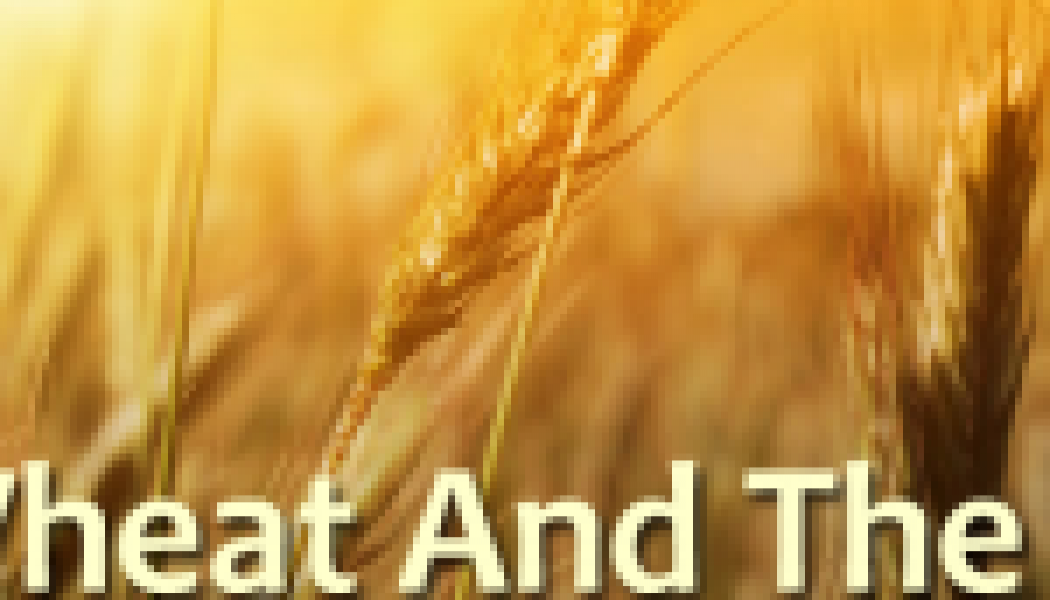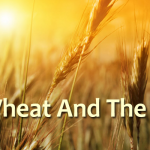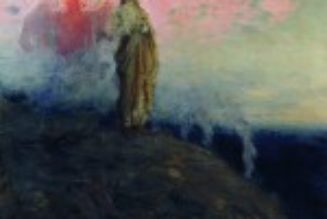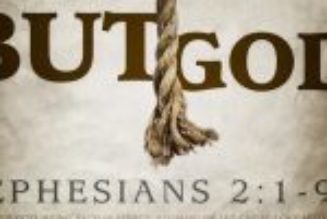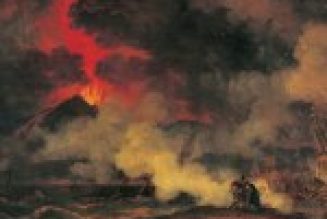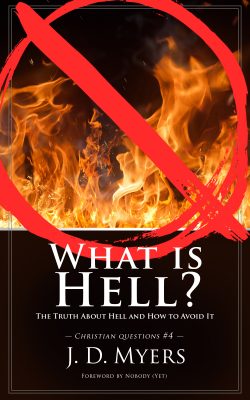 I have a book on hell coming out in June, titled What is Hell? You can pre-order the Kindle version on Amazon. Between now and then, I will be focusing my podcasts studies on some of the content from the book. We will look at the eight key terms that are often equated with hell, and about a dozen key passages that are thought to teach about hell.
I have a book on hell coming out in June, titled What is Hell? You can pre-order the Kindle version on Amazon. Between now and then, I will be focusing my podcasts studies on some of the content from the book. We will look at the eight key terms that are often equated with hell, and about a dozen key passages that are thought to teach about hell.
If you want to learn the truth about hell, and what the Bible actually teaches about hell, make sure you get a copy of my book, What is Hell?
In this study, we are considering the Parable of the Wheat and the Tares in Matthew 13:24-30, and specifically what it means when the tares are cast into a furnace of fire, where there is weeping and gnashing of teeth.
Is Matthew 13:40, 42 (Matt 13:50) a warning about hell?
Let’s begin with the specific verses we want to consider:
Matthew 13:40, 42: “Therefore, the tares are gathered and burned in the fire, so it will be at the end of this age. … and will cast them into the furnace of fire. There will be wailing and gnashing of teeth.”

It is important to first consider the context of Matthew 13.
Matthew 13 contains several parables which have consistently challenged interpreters and Bible students. In fact, even the first hearers of these parables were confused by them, as evidenced by the fact that the disciples asked Jesus to explain the parables to them (cf. Matt 13:10, 36).
As Jesus explains the parables, He also tells His disciples that one reason He speaks in parables is so that people do not understand what He is talking about (cf. Matt 13:15-16).
In other words, Jesus wanted people to be confused by His parables. Why? So that those who wanted to learn what He was talking about would come to Him for an explanation.
Therefore, if you’ve ever been confused by a parable, be encouraged, for you are on the right track. Then allow this confusion to lead you to the feet of Jesus.
Three Keys to Understanding Parables
By doing this, you will come to discover three keys to understanding the parables of Jesus.
First, if Jesus explains some of the symbolism of the parable, this will greatly help in your understanding.
Second, it is critically important to learn the historical, cultural, and theological contexts behind the parables.
What matters most in these parables is not what you and I want them to say, but what the original audience heard and understood Jesus to be saying. This means that if you want to understand these parables, you must get into the mindset of the original audience by seeking to understand their times and culture, how they read the Hebrew Bible, and what sort of concerns and issues were commonly discussed in their day, not ours.
Finally, it is important to recognize that Jesus had a sense of humor.
Many of His stories were told with a twinkle in His eye and a half-smile on His lips. The stories often contain half-jokes, plays on words, and surprising twists and turns that were intended to amuse, delight, and amaze His hearers. His parables used humor to instruct the hearers about what was most important.
Historical-Cultural Background to the Parables in Matthew 13
With these three keys in mind, a few cultural, historical, and theological details will help us better understand what Jesus is saying in Matthew 13 (and in all of His parables).
First, most of Jesus’ parables are about the kingdom of God. Many people today, when they think about the kingdom of God, think about heaven.
But nobody in the days of Jesus thought this. They had daily, negative experiences with the “kingdom of Rome,” and they longed for the promised and prophesied Messiah to come and overthrow Rome so that the kingdom of God could take over.
 The kingdom of God, therefore, is the rule and reign of God on earth, here and now as a replacement for the kingdoms of men.
The kingdom of God, therefore, is the rule and reign of God on earth, here and now as a replacement for the kingdoms of men.
Second, the people to whom Jesus spoke were nearly all Jewish, who had been immersed in the themes and ideas of the Hebrew Scriptures since birth.
Many modern Christians spend little to no time studying the “Old Testament,” and as a result, fail to understand much of what the New Testament teaches. This is especially true with the parables. A deep understanding of Old Testament concepts, imagery, and themes is necessary to understand the parables of Jesus.
Finally, it is critical to recognize that the parables of Jesus were politically and religiously subversive, but not primarily against Rome, as the Jewish people wanted and expected.
His parables were subversive to the politics and religion of Judaism. This is one of the reasons Jesus didn’t want everyone to understand what He was saying. If people among the Jewish political and religious ruling class understood what Jesus was saying, they would have crucified Him much sooner than they did. If we fail to grasp the subversive and dangerous elements in the parables of Jesus, we have likely misunderstood them.
So with all of this in mind, Matthew 13 contains seven parables about the kingdom of God, which is also called the kingdom of heaven.
And despite the popular teaching that is found in some Christian circles today, not a single one of these parables is about how to go to heaven when you die, or how to tell if you are truly a Christian.
The Seven Parables of Matthew 13 are not about the afterlife at all.
Instead, all seven are about the nature, character, birth, and growth of the kingdom of God on earth.
For example, the Parable of the Four Soils (Matt 13:1-8) is not about who is a Christian and who isn’t, or how to determine who gets to go to heaven and who doesn’t. The parable is about how different people respond to the teachings about the kingdom (Matt 13:19). Any believer or unbeliever can be any one of the four soils.
Note as well, by the way, the humor in the Parable of the Four Soils. This sower went out and scattered seed all over the place, willy-nilly, not caring where the seed landed. Seed was valuable, and no sower in that day would have been this careless. But apparently, God is careless with the truths of the kingdom, scattering them all over the place without much concern for where they land. It is not very “efficient,” but God has never cared much for efficiency.
The Parable of the Wheat and the Tares (Matthew 13:24-30)
All of this helps us grasp the meaning of the Parable of the Wheat and the Tares in Matthew 13:24-30 and the explanation by Jesus in Matthew 13:36-43.
By understanding this parable, we will discover a surprising truth about the fire mentioned in Matthew 13:42 (and Matthew 13:50) and the identity of the ones who are burned in this fire.
Jesus says that the kingdom of heaven is like a man who sows good seed in his field (Matthew 13:24). The kingdom of heaven, of course, is not heaven, but is the way God brings heaven down to earth as Jesus and His disciples spread the rule and reign of God over the earth. It begins with the sower spreading seed. But an enemy comes and sows bad seeds in the field, so that a bunch of weeds, or tares, spring up among the wheat.
The seed that Jesus refers to should be read in light of the first parable of Matthew 13, the Parable of the Four Soils.
There, Jesus teaches that the seed is the Word of God. But here in Matthew 13 we see that there are two types of seeds that can be scattered. There are the seeds of kingdom, and the seeds of the devil. These are two contrasting kingdoms, which result in two contrasting types of people.
But initially, when the seeds first begin to sprout, there is great difficulty in deciding between the wheat and weeds.
When the servants discover the weeds, they ask how the weeds came to exist and what the owner wants to do about them (Matthew 13:25-27).
This is where some humor enters into this parable. As anyone who has ever had a field (or even a flower garden) knows, one does not need an enemy to sow bad seeds for weeds to pop up and grow.
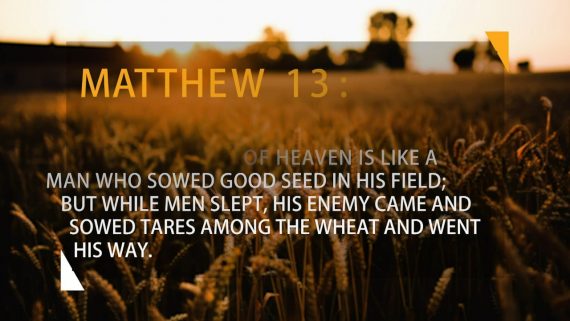
So when Jesus describes an enemy sowing bad seeds in the owner’s field, His audience would have likely snickered a little bit. No enemy would work so hard to ruin a crop. If an enemy really wanted to ruin someone’s crop, there were better and easier ways to do it.
But the enemy in the parable does sow bad seeds in this story, which not only shows his own foolishness, but also provides a humorous backdrop for the rest of the story.
Many commentaries and articles point out that the bad seed in the field is most likely darnel, which looks exactly like wheat until harvest time. It is a mimic weed. This is why the owner of the field tells his servants to just let the two plants grow side by side until harvest (Matthew 13:27-30).
Prior to harvest, it would be nearly impossible to tell the two apart, and so any attempt to remove the darnel would likely result in the loss of wheat as well. Once harvest arrives, wheat turns golden and the heavy heads of grain droop down toward the ground, but darnel tends to remain greener for longer and will continue to stand upright.
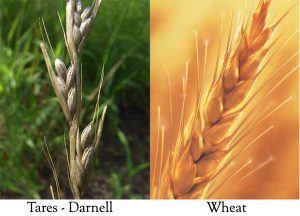 Since wheat and darnel appear so identical, the presence of the tares in the field goes unnoticed until the grain begins to “go to crop,” or develop a head. This is why the servants only notice the tares once the wheat begins to mature (Matthew 13:26).
Since wheat and darnel appear so identical, the presence of the tares in the field goes unnoticed until the grain begins to “go to crop,” or develop a head. This is why the servants only notice the tares once the wheat begins to mature (Matthew 13:26).
So they ask the owner if he wants them to pull out the tares, but since wheat and darnel look quite similar to each other prior to full maturity, the owner tells his servants to leave the weeds alone and let them grow along with the wheat.
At harvest, the reapers will go through and gather the tares, and then they can harvest the wheat (Matthew 13:30). The tares are thrown into the fire to be burned.
One of the reasons it was necessary to first harvest and then burn the tares is because darnel can be deadly to livestock and humans if consumed in large quantities. Smaller quantities will cause dizziness if baked into bread or brewed with beer.
In fact, there are historical records of people actually cultivating darnel for this very reason, treating it like an ancient form of cannabis. But if too much is consumed, darnel can cause great sickness and even death.
The Explanation of the Parable of the Wheat and the Tares (Matthew 13:36-43)
Thankfully, this is one of the parables that Jesus explained.
When Jesus explains this parable to His disciples, He begins by identifying the various characters in the story.
He says that the sower is the Son of Man (Matthew 13:37), which is one of Jesus’s favorite titles for Himself. The field which the sower plants is the world, and so the good seeds that go out into the world are the sons of the kingdom (Matthew 13:38). The tares are therefore the opposite of the sons of the kingdom; Jesus calls them the sons of the wicked one. The enemy is the devil, the harvest is the end of the age, and the reapers are the angels (Matthew 13:38).
Now each of these characters need to be more carefully explained, but first, it is critical to notice that there is one set of characters Jesus does not identify.
This missing identification is the key to the parable.
Who is it that Jesus does not identify? It is the servants.
Jesus does not explain who the servants represent.
I have heard some say that the servants are the reapers, but when the owner is speaking to the servants, he clearly identifies the reapers as a different group (cf. Matthew 13:30).
So who are the servants? Who do the servants represent?
The solution to this problem is to return to the image of the field as the world.
The Son of Man sowed seeds in the field, and the servants went out and worked in the field. Since the field is the world, and Jesus is the one who sowed the seeds in the world, then the servants are the ones who tend, cultivate, and work in the fields. Who are they?
They are the followers of Jesus. They are disciples.
The servants in the story are the Christians. Christians, or followers of Jesus, are those who work in the world to grow and expand the kingdom of God which Jesus planted and initiated.
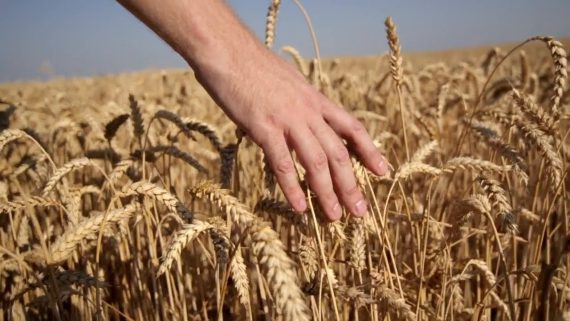
But if the servants are Christians, then who are the “sons of the kingdom”?
Jesus says the seed is the sons of the kingdom. But if the servants are Christians, then the sons of the kingdom (the seed) cannot also be Christians.
To put it another way, since the servants are the followers of Jesus, then this means that the sons of the kingdom must be someone else. And when we understand the identity of the sons of the kingdom, we will also understand the identity of the sons of the evil one (which might be better translated as “sons of wickedness”; Matthew 13:38).
If the Servants are Christians, then who are the Sons of the Kingdom?
To understand the identity of both, it is first necessary to understand how the word “son” is used in Scripture.
Typically, a “son” is understood to be a child of someone else. But the word “son” can also be used metaphorically. When the word “son” is used in connection to a concept or idea, instead of to a person or family, it refers to the characteristics or inner attributes of someone, rather than to the person themselves.
So “sons of this world” are contrasted with “sons of light” in Luke 16:8 (cf. John 12:36; 1 Thess 5:5). A student or disciple of the Pharisees could be called a “son of the Pharisees” (Matt 12:27; Acts 23:6). Scripture can also speak of “sons of the resurrection” (Luke 20:36), “sons of this age” (Luke 16:8; 20:34), “sons of disobedience” (Eph 2:2; 5:6), “sons of the devil” (Acts 13:10) and numerous other similar terms.
Such descriptions are not literal (a son of the devil is not literally the biological offspring of the devil), but are instead figurative and symbolic ways of referring to someone’s character and behavior.
So who are the sons of the kingdom and the sons of wickedness, and how can we tell? One more contextual key is needed before an answer is discovered.
In the context before these seven parables of Matthew 13, the Jewish religious leaders accused Jesus of operating according to the power of Beelzebub (Matthew 12:24). Jesus responds with a teaching full of symbolism and imagery (Matthew 12:25-37) that shows up again in the parables of Matthew 13. He speaks of kingdoms (Matthew 12:25, 28), sons of the Pharisees (Matthew 12:27), gathering and scattering (Matthew 12:30), this age and the age to come (Matthew 12:32), and the fruitfulness (or lack thereof) of various trees (Matthew 12:33-37).
All the parables of Matthew 13 must be read in light of this confrontation between Jesus and the Pharisees. While they were accusing Him of doing the devil’s work, He responded by saying that it was not Him, but they, who were committing blasphemy and speaking evil from their hearts (Matthew 12:35).
But how could the onlookers, the disciples, tell who was right?
They had grown up being taught to love, respect, and listen to the religious Pharisees. But now they loved, respected, and listened to Jesus.
Yet the Pharisees were saying that the teachings of Jesus were from the devil, and now Jesus was saying the same thing about the teachings of the Pharisees. So what were the disciples to do? How could they know who was right and who was wrong?
If you have ever had two Bible teachers, both of whom you greatly respect, disagree with each other, then you understand the dilemma of the disciples.
How were they to choose between Jesus and the Pharisees?
The Parable of the Wheat and the Tares is the answer to their question.
In this parable, Jesus, the Son of Man, tells His servants, the disciples, that two types of seeds have been sown which result in two types of sons of two types of kingdoms. But which was which and how could they know?
Jesus tells His disciples to wait until the harvest “at the end of this age” (Matthew 13:40).
But this is not helpful for them if the end of the age is thousands of years in the future when the new heavens and new earth are created.
So what if “this age” was the age in which Jesus and His disciples were living, and the age to come was the age that followed (cf. Matthew 12:32)?
Indeed, Scripture indicates in numerous ways and places that a new age did indeed come into existence with the death and resurrection of Jesus and the birth of the church. The death and resurrection of Jesus gave birth to a new age, the age of the kingdom of God, the church age.
There were birth pains and many travails as the old age died and the new age began (as Jesus discusses in Matthew 24–25), but the resurrection of Jesus and the birth of the church was the sign that the new age had begun.
Jesus tells His disciples that while it is difficult for them to decide between the wheat and the tares right now, it will become clear to them at the harvest.
Though they had trouble deciding between the way of Jesus and the way of the Pharisees, the end of the age would make it clear when the messengers of God arrived and took away the tares.
Here we have the religiously subversive nature of the parable.
The disciples of Jesus are faced with a choice: they can either follow the way of Jesus or the way of the Pharisees. Jesus tells them that they don’t need to figure it out.
In fact, it would be dangerous for them to try to do so, for they will not be able to properly and perfectly tell the difference between the good teaching and bad.
Instead, they should just wait for the harvest and let the reaping angels separate the wheat from the chaff.
And this is indeed what happened in 70 AD.
The way of the Pharisees was destroyed when Jerusalem and the temple were burned with fire.
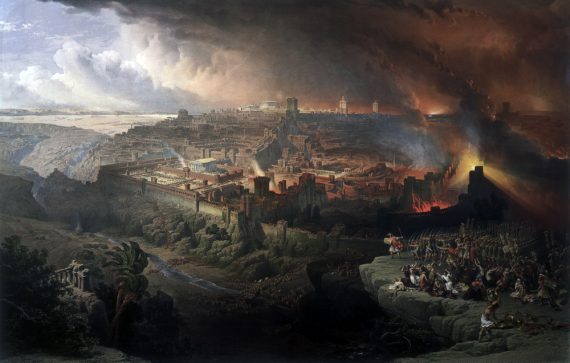
This does not mean that the Pharisees and all who followed their teachings were unregenerate sinners who will spend eternity burning in hell. Everlasting torture in hell is not anywhere in view with this parable.
To the contrary, the “furnace of fire” imagery is drawn from Daniel 3:19-25 where Daniel’s friends are thrown into a furnace of fire, but only their bonds are burned as they walk around in the flame with one shining like the Son of God. (As a side note, the “Son of Man” imagery is drawn from Daniel 7:13-14, and the imagery of the righteous shining like the sun in Matthew 13:43 is drawn from Daniel 12:3).
It can be assumed that when Jerusalem was destroyed by the Roman army, many Christians were also consumed by the flames. But Christianity survived, as it was not (and is not) dependent upon a city, a temple, or a priesthood.
Yet the Jewish Pharisaical religion was dependent upon such things, and so it died out when Jerusalem fell.
And so we see that the burning of the chaff in the furnace of fire is not about God sending people to hell where they will burn forever and ever. Instead, it is about the disciples of Jesus allowing God to be the one to judge between right and wrong, good and evil, especially when it comes to deciding between the teachings of Jesus and the teachings of the Pharisees.
As a result of the events in Genesis 3 when Adam and Eve tried to gain for themselves what should be left up to God, we humans have always done a poor job of judging between good and evil.
So God invites us to leave all such judgment up to Him. And this is what Jesus tells His disciples to do as well.
So the Tares are NOT “sent to hell”
This parable, therefore, is not about how God sends wicked people to burn forever in the furnace of hell, but is instead about how the disciples of Jesus should allow God alone to make judgments between good teaching and bad teaching, and allow His angels to burn up the bad teaching “at the end of this age.”
This is what happened with the destruction of Jerusalem and the temple in 70 AD.
But what about the Wailing and Gnashing of Teeth?
Some may object that the description of weeping and gnashing of teeth from Matthew 13:42 indicates that Jesus does indeed have hell in mind.
The phrase “weeping and gnashing of teeth” occurs six times in Matthew (8:12; 13:42, 50; 22:13; 24:51; 25:30), once in Luke (13:28), and nowhere else in the New Testament.
Matthew’s six uses of this phrase are all in reference to those who are “part of the family,” that is, those who belong to God.
 In Matthew 8:12, it refers to those who are sons of the kingdom. In Matthew 13:42, it refers to those who were gathered out of God’s kingdom, indicating that they were in it to begin with. In Matthew 13:50, the image is of two types of people caught in the same net (which is a symbol of the kingdom of God), and one type is pulled out and experiences this weeping and gnashing of teeth. In Matthew 22:13, the phrase describes a man who is actually at the wedding banquet. And in both Matthew 24:51 and Matthew 25:30, it is used in connection to the experience of a servant who did a poor job serving his master.
In Matthew 8:12, it refers to those who are sons of the kingdom. In Matthew 13:42, it refers to those who were gathered out of God’s kingdom, indicating that they were in it to begin with. In Matthew 13:50, the image is of two types of people caught in the same net (which is a symbol of the kingdom of God), and one type is pulled out and experiences this weeping and gnashing of teeth. In Matthew 22:13, the phrase describes a man who is actually at the wedding banquet. And in both Matthew 24:51 and Matthew 25:30, it is used in connection to the experience of a servant who did a poor job serving his master.
What this seems to indicate, therefore, is that the weeping and gnashing of teeth does not refer to the tortured experience of unregenerate people in hell, but instead to the experience of some people who belonged to God in some way and should have known what He expects of them and how they are to live.
While this can refer to believers who might have a negative experience at the Judgment Seat of Christ or who experience the discipline of God in this life (cf. Matthew 8:13), it can also refer to Jewish people who should have known that Jesus was the promised Messiah.
The phrase “weeping and gnashing of teeth,” therefore, has nothing whatsoever to do with hell.
It is instead a graphic and descriptive middle-eastern way of expressing profound regret and shame, and maybe even fury.
The weeping and wailing speaks of “extreme loss, not so much of actual pain” while the gnashing or grinding of teeth could refer to fury and anger directed at someone else (see Fudge, The Fire That Consumes, 171).
Hell is not in view in Matthew 13:40, 42
When we read in Matthew 13:42 (and later in 13:50) about the tares being cast into the furnace of fire where there is weeping and gnashing of teeth, we should not read this as an image of God casting people into everlasting flames of hell where they scream and wail for all eternity at the painful suffering inflicted upon them.
Instead, Jesus is saying that when judgment comes after the end of the age (which ended at the resurrection of Jesus), the good and bad teachings will be made clear because one set will survive and the other will be burned up.
This judgment occurred in 70 AD when the city of Jerusalem, along with the Jewish temple, was destroyed and burned by the Roman military.
On that day, there were not only flames and fire, but also much weeping and gnashing of teeth.
The Burning of the Tares in History
The Jewish historian Flavius Josephus, in his history of the destruction of Jerusalem, writes that in the time right before the Roman military attacked and burned the city and the temple, chariots and soldiers were seen to be running around in the clouds around Jerusalem, and voices from heaven were heard calling for the removal of the city.
It sounds like fiction, and Josephus admits as much, but he also says that many people witnessed these events and told him about them. Here is what he writes:
Besides these, a few days after that feast, on the one and twentieth day of the month Artemisius, [Jyar,] a certain prodigious and incredible phenomenon appeared: I suppose the account of it would seem to be a fable, were it not related by those that saw it, and were not the events that followed it of so considerable a nature as to deserve such signals; for, before sun-setting, chariots and troops of soldiers in their armor were seen running about among the clouds, and surrounding of cities. Moreover, at that feast which we call Pentecost, as the priests were going by night into the inner [court of the temple,] as their custom was, to perform their sacred ministrations, they said that, in the first place, they felt a quaking, and heard a great noise, and after that they heard a sound as of a great multitude, saying, “Let us remove hence” (Josephus, The Wars of the Jews, 6.5.3.)
Could it be that these were the angels whom Jesus prophesied about in Matthew 13:39-41, who were sent to separate the wheat from the chaff at harvest time?
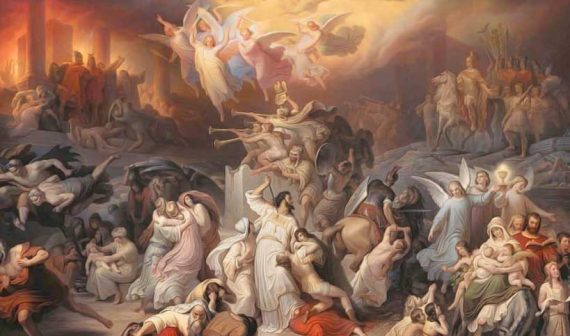
Conclusion
The parable of the wheat and the tares in Matthew 13:24-30 and 36-43 is not about God sending sinners to hell to burn for all eternity.
It is instead a prophecy about the destruction of Jerusalem and the Jewish religion (as practiced in that day), and how the disciples of Jesus should not seek to judge or decide between right and wrong when it came to the teaching of Jesus or their own Jewish traditions.
They should instead allow God and the angels to make this separation on their own, which is what happened in 70 AD.
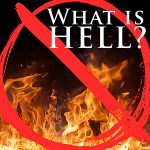 Do have more questions about hell? Are you afraid of going to hell? Do want to know what the Bible teaches about hell? Take my course “What is Hell?” to learn the truth about hell and how to avoid hell.This course costs $297, but when you join the Discipleship group, you can to take the entire course for free.
Do have more questions about hell? Are you afraid of going to hell? Do want to know what the Bible teaches about hell? Take my course “What is Hell?” to learn the truth about hell and how to avoid hell.This course costs $297, but when you join the Discipleship group, you can to take the entire course for free.
